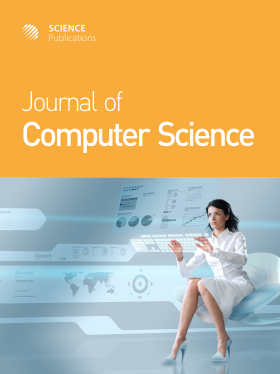Performance Enhancement of Underwater Target Tracking by Fusing Data of Array of Global Positioning System Sonobuoys
Abstract
Problem statement: An accurate knowledge of geographic positions of sonobuoys is critical for the conduct of antisubmarine warfare operations and detected target localization. Deployed from an airborne platform or a surface vessel, arrays of sonobuoys could be used to efficiently track and localize submarines. Lastly, some sonobuoys were being equipped with GPS for improving system accuracy and potentially allowing networked Sonobuoy positioning. However, the computation of the range using the propagation loss profile and the data of one sonobuoy usually leads to inaccurate target localization due to several effects and uncertainties. It was, alternatively, reported that if the target is within the detection rage of two or more sonobuoys, greatly improved target localization can be achieved. Approach: Aim of this research was to investigate the feasibility of fusing data from a distributed field of GPS sonobuoys to create an Artificial Intelligence (AI) based model for the error of the range computation in case of the target being detected by only one sonobuoy. Proposed module was designed utilizing Adaptive Neuron-Fuzzy Inference Systems (ANFIS) to estimate the range error associated with the computation using the propagation loss profile when the target is within the detection range of only one sonobuoy. The architecture of the proposed ANFIS system had two unique features. First was the real-time cross-validation applied during the update (training) procedure of the ANFIS-based module while the target was detected by two sonobuoys and the range was computed. Second feature was the use of non-overlapping and moving window for the real-time implementation of the ANFIS-based data fusion module. Results: Performance of the proposed system was examined with simulation data considering different scenarios for both the array of GPS sonobuoys and the target. Results showed that the corrected positioning by one sonobuoy is completely following the positioning by two sonobuoys over the entire experiment with the error in between evaluated to have RMSE value of 0.004 Nm and 0.008 for both scenarios. Conclusion: These results revealed that with aided from the proposed ANFIS model; significant enhancements to the underwater target tracking accuracy in cases of single sonobuoy detection could be achieved and thus maintaining consistent levels of accuracy over the whole tracking mission.
DOI: https://doi.org/10.3844/jcssp.2009.199.206

- 5,665 Views
- 4,388 Downloads
- 0 Citations
Download
Keywords
- Tracking
- data fusion
- GPS sonobuoys
- neuron-fuzzy systems
